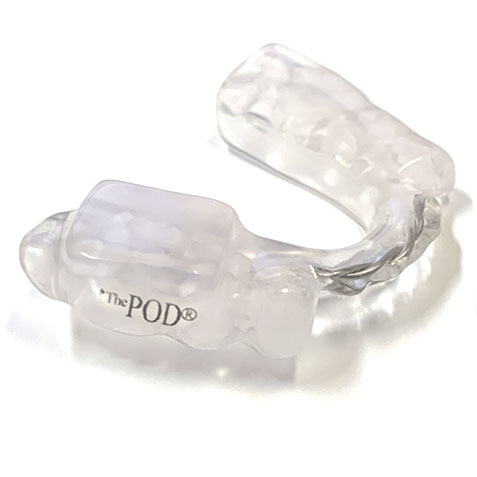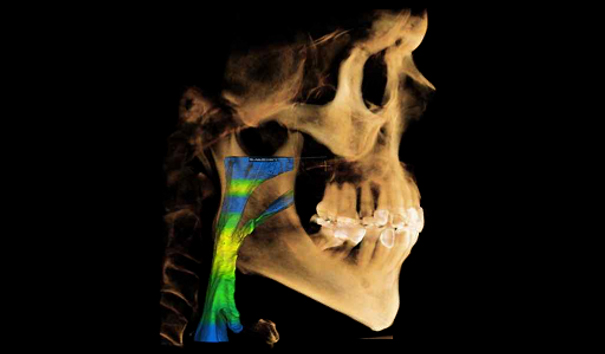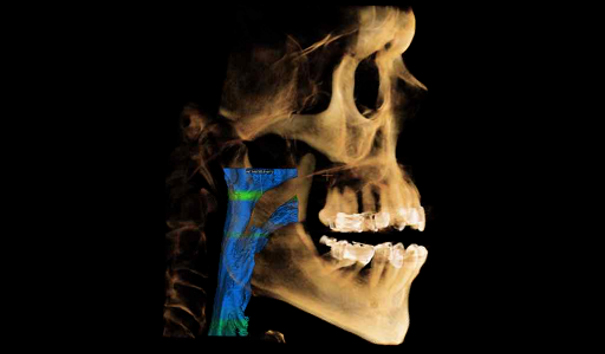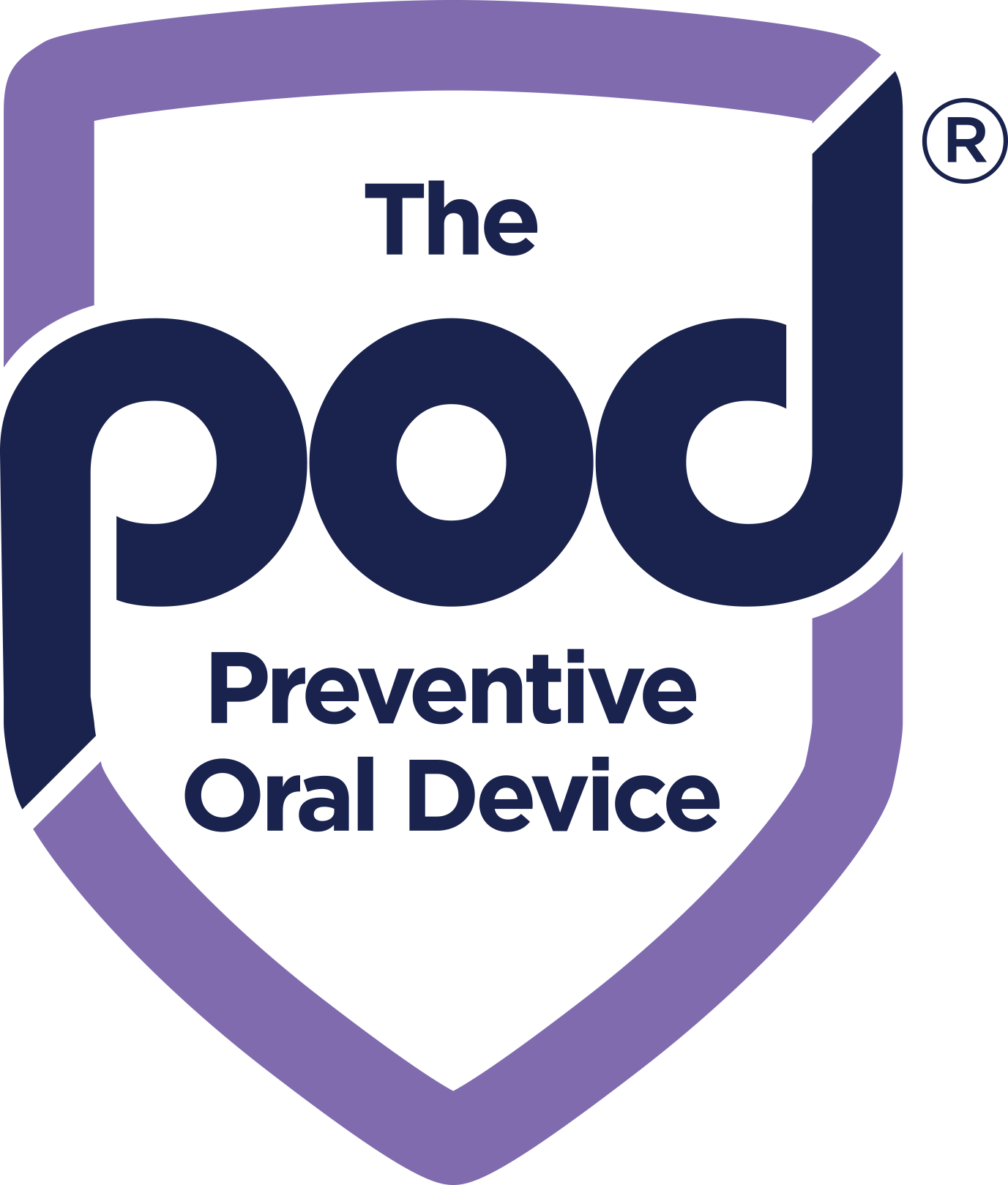What is TMJ?
Technically, everyone has TMJ. In fact, we have two. TMJ stands for Temporomandibular Joint, and we all have a left and right TMJ.
The TMJ is one of the most important joints in the body. Not only does it allow for smooth opening and closing of the mandible, or jawbone, to speak and eat, but it can withstand extremely strong bite forces that come along with chewing our food.
The TMJ is the only bilateral joint in our body that functions as one unit! The left and right joints cannot function separately. A problem with one side will eventually lead to a problem on the other side. Noises such as clicking and popping are signs that the TMJ is in an incorrect position.
When someone is experiencing joint sound accompanied by limited mouth opening, jaw and facial pain, and headaches, they are said to have TMJ Dysfunction, or TMD.
Jaw Pain and TMD should never be ignored. This condition can become chronic if not addressed. Bone loss in the jaw bone along the TMJ, anxiety, depression, and compromised quality of life can be seen in TMD sufferers. Help is Possible.
Meet Dr. Scott
The Jaw Pain Doc
Dr. Scott Simonetti graduated from East Islip High School and went on to Cornell University and earned a degree in Nutritional Sciences and then attended the University of Buffalo School of Dental Medicine, where he earned his DDS in 2001. Since then, he has been at a private general practice in East Islip, New York. Dr. Scott understands the importance of whole-body health and is passionate about improving the quality of life for his patients.
Dr. Scott has lectured for Continuing Education programs and has appeared on National Radio shows and blogs. His favorite topics include TMJ Dysfunction, Nitric Oxide, Disordered Breathing, fatigue, headaches, oxidative stress, and mitochondrial dysfunction. Dr. Scott has also designed and patented several oral orthotics that have received FDA 510k clearance for multiple indications of use.

Meet Dr. Scott
The Jaw Pain Doc

Dr. Scott Simonetti graduated from East Islip High School and went on to Cornell University and earned a degree in Nutritional Sciences and then attended the University of Buffalo School of Dental Medicine, where he earned his DDS in 2001. Since then, he has been at a private general practice in East Islip, New York. Dr. Scott understands the importance of whole-body health and is passionate about improving the quality of life for his patients.
Dr. Scott has lectured for Continuing Education programs and has appeared on National Radio shows and blogs. His favorite topics include TMJ Dysfunction, Nitric Oxide, Disordered Breathing, fatigue, headaches, oxidative stress, and mitochondrial dysfunction. Dr. Scott has also designed and patented several oral orthotics that have received FDA 510k clearance for multiple indications of use.
Patient Information
What is Temporomandibular Disorders (TMDs)?
Temporomandibular disorders are disorders of the temporomandibular joints, jaw muscles, or nerves. Your temporomandibular joint allows your mouth to open and close and move all around. It is a complicated system of muscles, connective tissues, and the joint itself that serves an important function. Because of this, problems can easily arise, causing TMDs.
What causes TMDs?
Some possible causes include:
- Diseases that affect the muscles or joints, like arthritis
- Injury to the jaw joint or connective tissues
- Habitual movements of the teeth and jaws, like grinding or clenching
What are the symptoms for TMDs?
Signs and symptoms of TMDs can include:
- Pain in or around the ear
- Pain when chewing
- Tender jaw muscles
- Painful clicking or popping when opening or closing the jaw
- Difficulty opening or closing the mouth
- Tension, stress, and migraine headaches
- Jaw pain and pain in the temple region
- Facial pain and neck pain
What are some ways to treat the symptoms of TMDs?
There are several things you can try that might help:
- Eat softer foods
- Limit wide jaw movements
- Avoid chewing gum or biting down on anything hard
- Apply moist, warm compresses
- Wear a custom night guard, such as The POD®, to help decrease clenching and grinding of teeth during sleep.
What is The POD®?
The POD® is a unique, custom night guard made by your dentist and is designed specifically for you. It will treat TMJ/TMD symptoms while protecting the teeth from the destructive forces of clenching and grinding. It is FDA 510k cleared for the treatment of bruxism and TMD symptoms.
How does The POD® work?
Worn during sleep, the device serves to protect the teeth from the destructive forces of clenching and grinding and helps to alleviate the associated pain and headaches. By having the dental arches discluded, excessive wear of the teeth caused by clenching and grinding is reduced.
By utilizing patented Unilateral BiteBlock Technology®, the device can reduce bite forces while making more room for the tongue during sleep.

About The
Preventive Oral Device®
The POD® is a US and internationally patented night guard worn while sleeping. It is used to protect your teeth and prevent tooth damage caused by clenching and grinding and also help treat TMJ related jaw pain, headaches, and facial pain.
By having the dental arches discluded, excessive wear of the teeth caused by clenching and grinding is reduced. The disocclusion of the jaw reduces muscle tension to help alleviate jaw pain, facial pain, and headaches.
US Patent 10,639,187

The POD® is:
Custom made for you
For a precise fit.
Made from
High quality, biocompatibility tested material.
Allows full range of mouth movement
So you can open and close your mouth, as well as talk, drink water, and yawn while wearing the splint.
Covered
By some Insurance plans.
Guess Who Brought the POD® to the Podcast?
CBCT Scans

Without The POD®️, all teeth contact and the airway has (yellow) constrictions.

With The POD®️, the teeth do not contact, and the airway is enlarged.


Indications for use
The POD® is for the amelioration of clenching and bruxing associated with TMD and is to be used to aid in the relief of symptoms for TMD/TMJ.
Contraindications
This device is a contraindication for patients who:
- have complete dentures or an insufficient number of lower teeth to retain the appliance.
- have loose teeth or advanced periodontal disease.
- currently wear a mandibular advancement device at night for Obstructive Sleep Apnea.
Caution Only
Federal law restricts this device to sale by or on the order of a Dentist.


Indications for use
The POD® is for the amelioration of clenching and bruxing associated with TMD and is to be used to aid in the relief of symptoms for TMD/TMJ.
Contraindications
This device is a contraindication for patients who:
- have complete dentures or an insufficient number of lower teeth to retain the appliance.
- have loose teeth or advanced periodontal disease.
- currently wear a mandibular advancement device at night for Obstructive Sleep Apnea.
Caution Only
Federal law restricts this device to sale by or on the order of a Dentist.
See what patients are saying


